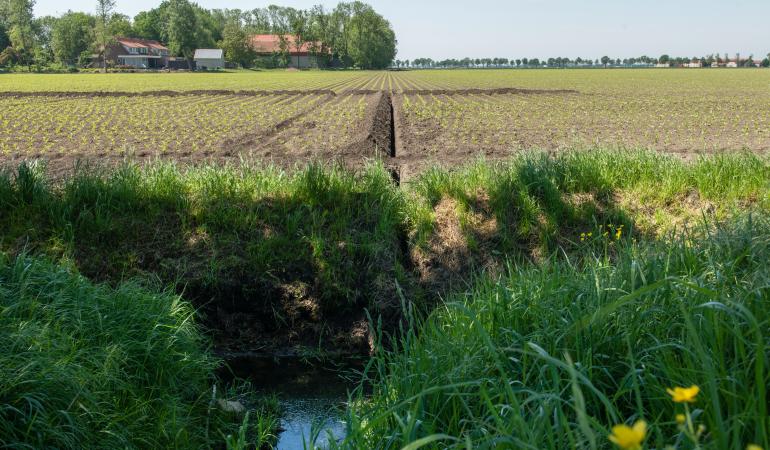
Pressure drainage can in some cases help to reduce CO2 emissions in peatland areas. This intervention is very expensive and only cost-effective when it sufficiently reduces CO2 emissions. In the Alblasserwaard-Vijfheerenlanden peatland area, this is the case for nearly 4,000 hectares out of the total 15,000 hectares of grazing land in the area. This has emerged from a societal cost-benefit analysis by the Dutch National Institute for Public Health and the Environment (RIVM).
What is pressure drainage?
Making peatland areas suitable for agriculture requires lowering the groundwater level. This exposes the peat layer in the soil to oxygen, as a result of which CO2 is released. Raising the groundwater level lessens the exposure of the peat layer to oxygen, reduces soil subsidence and lowers CO2 emissions. Pressure drainage enables active regulation of the ground level through a system of underground pipes.
Suitable areas mapped
Alblasserwaard-Vijfheerenlanden is an area with over 15,000 hectares of peatland used for grazing. A societal cost-benefit analysis conducted by RIVM has found that pressure drainage would be a cost-effective technology for nearly 4,000 hectares of grazing land in this peatland area. The use of this technology would reduce CO2 emissions by 50 to 75 per cent. It would also make the area more attractive to meadow birds like black-tailed godwits, lapwings and oystercatchers and reduce the costs of wastewater treatment and water management.
The greatest uncertainties in this analysis are the future price of CO2 allowances and the costs of installing and managing the drainage pipes.
RIVM has created a map that shows per agricultural plot to what extent the use of pressure drainage may be economical. This makes it possible to select suitable plots of grazing land in the area.
Reason for this societal cost-benefit analysis
As part of the Climate Agreement, agreements have been made to reduce CO2 emissions in the peatland areas of the Netherlands by 2030. This societal cost-benefit analysis by RIVM was commissioned by the province of South Holland, in the context of the Inter-Administrative Pro-gramme for a Thriving Countryside (Interbestuurlijk Programma Vitaal Platteland).